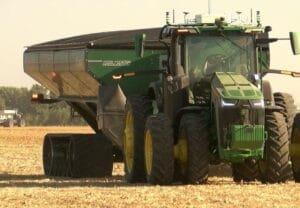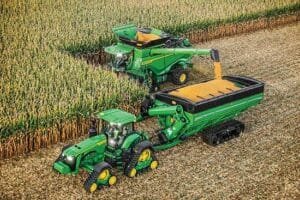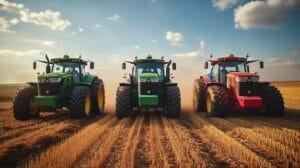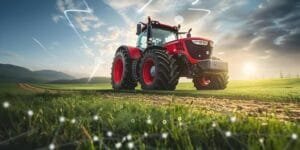The integration of autonomous technology into agriculture marks a pivotal shift in how we cultivate our food. From GPS-guided tractors to AI-powered harvesting robots, driverless systems are reshaping customary farming practices. This change, driven by advances in artificial intelligence, sensor technology, and precision agriculture, promises to address challenges such as labor shortages, operational efficiency, and resource management. As farms worldwide begin to adopt these autonomous solutions, the agricultural sector stands at the threshold of a technological revolution that could fundamentally change food production methods. The agricultural landscape is undergoing a revolutionary transformation as autonomous technology reshapes traditional farming practices. Smart tractors equipped with artificial intelligence navigate fields with precision, performing tasks from plowing to harvesting without human operators. These sophisticated machines utilize GPS guidance systems,computer vision,and advanced sensors to maintain accurate paths while avoiding obstacles and optimizing field coverage.
Modern autonomous farm equipment incorporates machine learning algorithms that analyze soil conditions, crop health, and weather patterns in real-time. This data-driven approach enables automated adjustments to seeding rates, fertilizer application, and irrigation levels, maximizing resource efficiency and crop yields. Farmers can monitor and control multiple vehicles together through centralized management systems, effectively multiplying their operational capacity.
The integration of drone technology further enhances autonomous farming capabilities. Aerial vehicles conduct regular field surveys,detecting pest infestations,diseases,and nutrient deficiencies before they become visible to the human eye. These insights trigger automated responses from ground-based equipment, ensuring timely intervention and reduced crop losses.
Small robotic units are becoming increasingly common for specialized tasks like selective harvesting and precise weed control. These agile machines move between crop rows, identifying and treating individual plants while minimizing chemical usage and environmental impact. Their electric powertrains contribute to reduced emissions and operating costs compared to traditional diesel-powered equipment.
The economic implications of autonomous agriculture extend beyond operational efficiency. Initial investment costs are offset by decreased labor requirements, reduced input waste, and improved crop quality. Farmers can operate around the clock when conditions are optimal, protecting yields during critical weather windows and maximizing returns on investment.
Safety improvements represent another notable advantage of autonomous systems. By removing operators from potentially hazardous situations, such as working with chemicals or operating machinery in adverse conditions, farms become safer workplaces. Remote monitoring and emergency shutdown capabilities provide additional layers of security.
Connectivity infrastructure plays a crucial role in supporting autonomous agriculture. High-speed internet networks and edge computing solutions enable real-time data processing and decision-making. Cloud-based platforms aggregate details from multiple sources, creating thorough farm management systems that optimize entire operations.
Looking forward, the integration of artificial intelligence with autonomous equipment will continue to evolve. Predictive analytics will anticipate equipment maintenance needs, weather impacts, and market conditions, allowing for proactive planning and risk management. As these technologies mature, smaller farms gain access to previously cost-prohibitive automation solutions, democratizing precision agriculture across the industry.
Technical standards and regulatory frameworks are developing to ensure safe and effective deployment of autonomous agricultural systems. Industry collaboration drives interoperability between different manufacturers’ equipment,while government agencies establish guidelines for testing and certification of autonomous farm vehicles.











